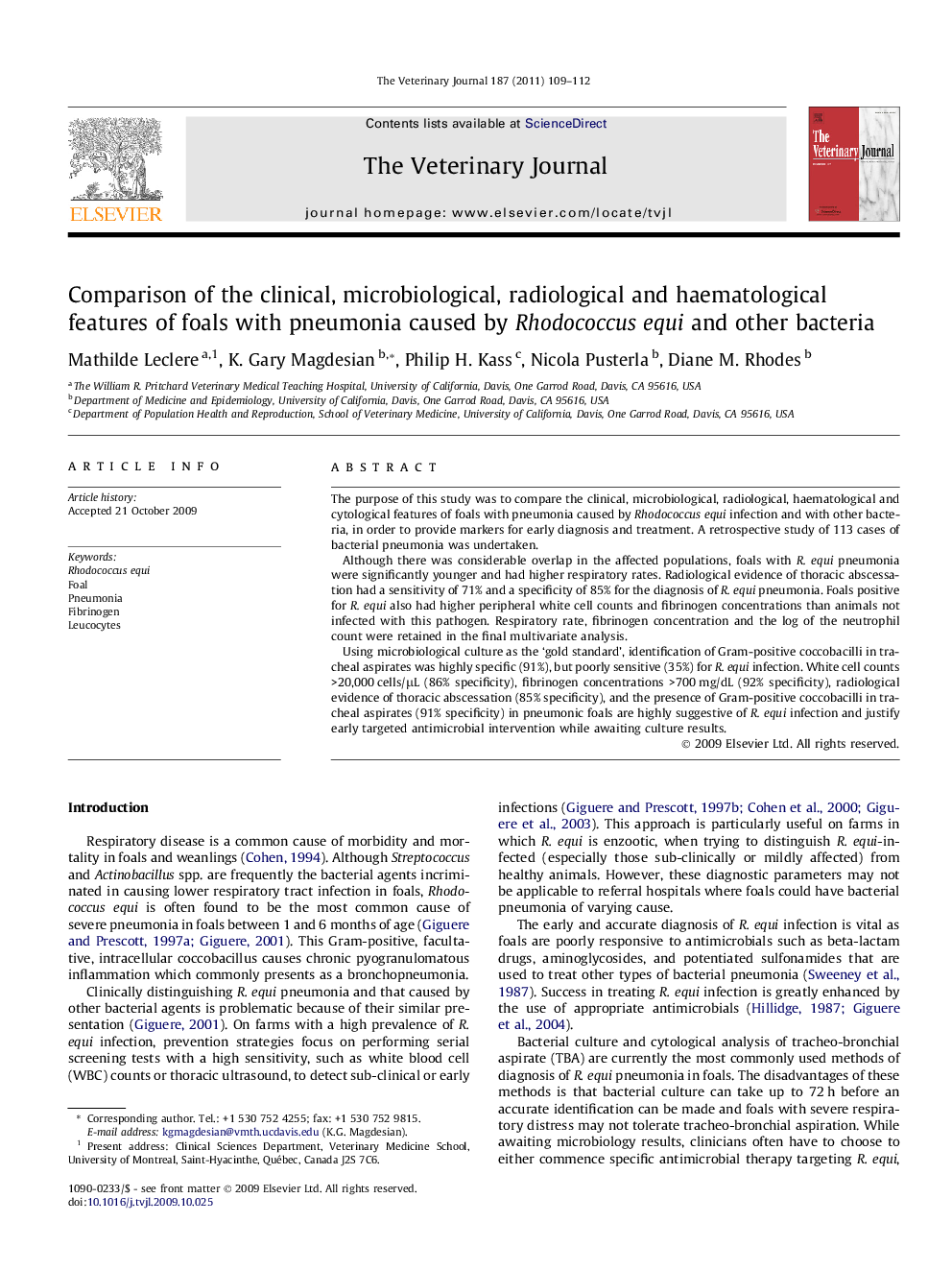| Article ID | Journal | Published Year | Pages | File Type |
|---|---|---|---|---|
| 2464959 | The Veterinary Journal | 2011 | 4 Pages |
The purpose of this study was to compare the clinical, microbiological, radiological, haematological and cytological features of foals with pneumonia caused by Rhodococcus equi infection and with other bacteria, in order to provide markers for early diagnosis and treatment. A retrospective study of 113 cases of bacterial pneumonia was undertaken.Although there was considerable overlap in the affected populations, foals with R. equi pneumonia were significantly younger and had higher respiratory rates. Radiological evidence of thoracic abscessation had a sensitivity of 71% and a specificity of 85% for the diagnosis of R. equi pneumonia. Foals positive for R. equi also had higher peripheral white cell counts and fibrinogen concentrations than animals not infected with this pathogen. Respiratory rate, fibrinogen concentration and the log of the neutrophil count were retained in the final multivariate analysis.Using microbiological culture as the ‘gold standard’, identification of Gram-positive coccobacilli in tracheal aspirates was highly specific (91%), but poorly sensitive (35%) for R. equi infection. White cell counts >20,000 cells/μL (86% specificity), fibrinogen concentrations >700 mg/dL (92% specificity), radiological evidence of thoracic abscessation (85% specificity), and the presence of Gram-positive coccobacilli in tracheal aspirates (91% specificity) in pneumonic foals are highly suggestive of R. equi infection and justify early targeted antimicrobial intervention while awaiting culture results.
